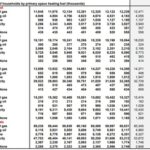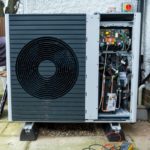Utility bills increasing. How to save on heating costs in New England. – The Providence Journal
Energy Disrupter
Even as temperatures drop into the 30s some nights, a record number of New Englanders might be stalling to turn on the heat because of surging energy costs plaguing the region this coming winter.
The National Energy Assistance Directors Association has said households across the U.S. could pay 17% more to heat their homes this winter — $22 billion more in heating costs this winter than in the 2021-2022 season. Those costs are expected to be even higher in New England, an area of the country largely reliant on imported natural gas.
According to the association, natural gas for heating is expected to increase 34% on average for households nationally. Heating oil costs could increase up to 13% and propane up to 15%.

More:How expensive will heating your home be in New England this year? Here’s what we know
Last month in Burlington, Vermont, New England’s energy sector convened for a forum held by the Federal Energy Regulatory Commission about the spin cycle the region finds itself in each winter — threats of electricity blackouts during prolonged cold spells paired with rising bills.
Here are ways New Englanders can try to save some dollars this winter on heating costs, as well as energy efficiency programs offered by utility companies.
High bills, blackout risks:Grave winter energy forecasts drawing lines across New England
5 ways to save on heating costs in New England this winter
Here are some tips from the U.S. Department of Energy and various New England utility companies on how you can keep heating costs down this winter in your home.
- Thicker curtains can help keep your home warmer. Open them during the day to naturally heat your home with sunlight and close them at night to keep the heat inside.
- Use a programmable thermostat to keep your heat at a certain number while you are sleeping or away. You can save 10% on your energy bill just by turning your thermostat down 10 to 15 degrees for eight hours a day, according to the U.S. Department of Energy.
- Consider air sealing your home and adding insulation to your walls and attic to retain heat. The U.S. Department of Energy says 25% of heat is lost through cracks and holes.
- Weatherstrip around doors and windows to keep heat from escaping. Lock your windows and external doors to keep out drafts.
- Replace your furnace filter every three months to reduce the demand for energy and improve the heating process.
Energy equity:How Massachusetts is getting electric vehicles, e-bikes to low-income populations
These programs can help you save on heating costs this winter in New England
Mass Save — an initiative sponsored by Massachusetts’ natural gas and electric utilities and energy efficiency service providers Berkshire Gas, Cape Light Compact, Eversource, Liberty Utilities, National Grid and Unitil — offers no cost home energy assessments for homes with 1-4 units.
Mass Save home energy assessments connect you with an energy specialist who can identify energy-saving opportunities, recommend no-cost energy-saving products shipped directly to your door, and give you access to Mass Save rebates and incentives to make recommended long-term energy-saving upgrades to your home.
More:Meet the groups bringing people of color into New England’s energy industry

In New Hampshire, NHSaves — a collaboration of the state’s electric and natural gas utilities — offers an arrange of energy-saving opportunities such as virtual energy assessments for commercial building owners, rebates and energy audits and weatherization.
Rhode Island Energy, through its home energy audits, offers advanced power strips, low-flow shower heads, faucet aerators and programmable thermostats. Based on their home assessment, Rhode Island Energy customers may also be eligible for 50% or more off approved insulation improvements and targeted air sealing.
Heating help: Weatherization Assistance Program for lower-income households in New England
If you live in a 1-4 unit home and meet income eligibility requirements, 100% of the cost to weatherize your home may be covered — including air sealing, insulation and energy-efficient heating units.
Customers who qualify for fuel assistance, electric assistance or subsidized housing are eligible for the federal Weatherization Assistance Program, which provides weatherization services to approximately 35,000 homes every year using U.S. Department of Energy funds.
Most Weatherization Assistance Program funds are distributed through local community action agencies.














